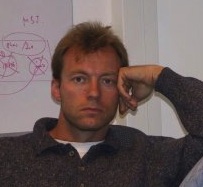Objectives
Why do some materials conduct electricity while other do not? Why do metals shine and dielectric materials are translucent or transparent? A material hosting more electrons, is it always a better conductor? Why do materials composed of the same atoms may have different electric or magnetic properties? Semi-conductors: what is hidden behind this term? How do the electronic devices we use every day work? To address these simple questions, the quantum origin of matter needs to be considered.Syllabus
- Introduction
- Solid State Physics as a science that addresses properties and phenomena in the condensed matter at all relevant scales. Link to applications.
- Example 1 : electronic data processors. Moor’s « law » of miniaturisation, FET transistors.
- Example 2 : electronic memory devices. HDD, SSD etc.
- History of the solid state physics : A short overview.
- Solid State Physics as a science that addresses properties and phenomena in the condensed matter at all relevant scales. Link to applications.
- Drude model of the electron conduction in metals (classic approach)
- Electric conduction phenomenon: knowledges at the beginning of XXth century, Drude’s hypotheses.
- Drude formula of conductivity. Orders of magnitude of relevant parameters.
- Temperature variation of the electric conductance.
- Specific heat.
- Applications of Drude model.
- High-frequency response of Drude’s electron gas (20 min.): AC-conductivity; local equations, propagation.
- Electric conduction phenomenon: knowledges at the beginning of XXth century, Drude’s hypotheses.
- Hall effect
- Description of the phenomenon. Equation of motion of an electron.
- The Hall constant.
- Applications
- Description of the phenomenon. Equation of motion of an electron.
- Phonons (crystal lattice vibrations), Brillouin zones
- Modelling the crystal potential (Lennard-Jones).
- Harmonic approximation.
- Harmonic vibrations of a 1D atomic chain (one atom per unit cell).
- Harmonic vibrations of a 1D atomic chain (two atoms per unit cell).
- Brillouin zones : Bravais lattice, Vigner-Seitz cell, construction of Brillouin zones of a solid.
- Modelling the crystal potential (Lennard-Jones).
- Quantum model of a non-interaction electron gas (Sommerfeld)
- Limitations and problems with classic Drude model.
- Schrödinger equation. Physical meanning.
- Born von Karman cyclic boundary conditions. Momentum (wave vector) and energy quantization.
- K-space filling. Fermi energy, Fermi sphere.
- Total energy of the system. Density of electronc states (DOS) vs system dimensions.
- TD properties of the Sommerfeld’s electron gas. Specific heat. Strengths and weaknesses of the model.
- Limitations and problems with classic Drude model.
- Quantum near-free electrons model
- Introduction. Historical context.
- A single electron in a periodic potential. Central equation.
- Gap opening (forbidden bands) at the limits of the Brillouin zone. Relation between the gap width and the crystal potential V(r).
- Reduced-zone representation: translation of E(k) branches inside the reduced (1st) Brillouin zone.
- Band occupation. Metals, insulators (semiconductors).
- Introduction. Historical context.
- Tight-binding model. Electronic band dispersion
- Introduction. General ideas.
- Construction of the wave function.
- Energy eigenvalues.
- Dispersion. Group velocity, effective mass.
- Consequence of the existence of the electronic bands on the electronic properties of materials.
- Introduction. General ideas.
- Specific heat of a crystal
- Classical limit : Dulong and Petit law (1812)
- Quantum limit. Phonons.
- Specific heat of a crystal lattice. Einstein model. Debye model.
- Classical limit : Dulong and Petit law (1812)
- Occupation of electronic bands: insulators, semiconductors, metals
- Intrinsic semi-conductors. Fermi level. Effective mass action law. Applications.
- Doped semi-conductors. Microscopic model of a single dopant atom in a solid.
- Examples of applications.
- Intrinsic semi-conductors. Fermi level. Effective mass action law. Applications.
- Introduction to superconductivity
- A bit of history. Discovery of the zero-resistance state.
- Perfect diamagnetism.
- Consequences of the Meissner-Ochsenfeld effect (1933). TD considerations.
- Phase diagram of a superconductor. Vortex.
- Examples of applications
- A bit of history. Discovery of the zero-resistance state.
- Conclusions : recent trends and challenges in the Condensed Matter physics
- Novel quantum materials and nano-structured materials/ Example : low-dimensional semiconducting heterostructures, graphene, topological insulators, surface and interface phenomena). Applications (example: photovoltaics).
- Strongly correlated electron systems (example: cuprates HTSC).
- Mott metal-insulator phase transition materials.
- Novel quantum materials and nano-structured materials/ Example : low-dimensional semiconducting heterostructures, graphene, topological insulators, surface and interface phenomena). Applications (example: photovoltaics).
Preceptorship
- Vibrations of crystal lattice (phonons 2D).
- Nearly free electrons in a square 2D potential.
- Electronic properties of graphene.
- Doped semiconductors (p-n junctions).
- Upon tutor's choice: Field-Effect transistor; magnetism; Quantum Hall effect; Quantum corral.
Requirements : preparatory classes (or L2) + basics of quantum mechanics.
Evaluation mechanism : written exam (2 hours).
Last Modification : Wednesday 6 September 2017

